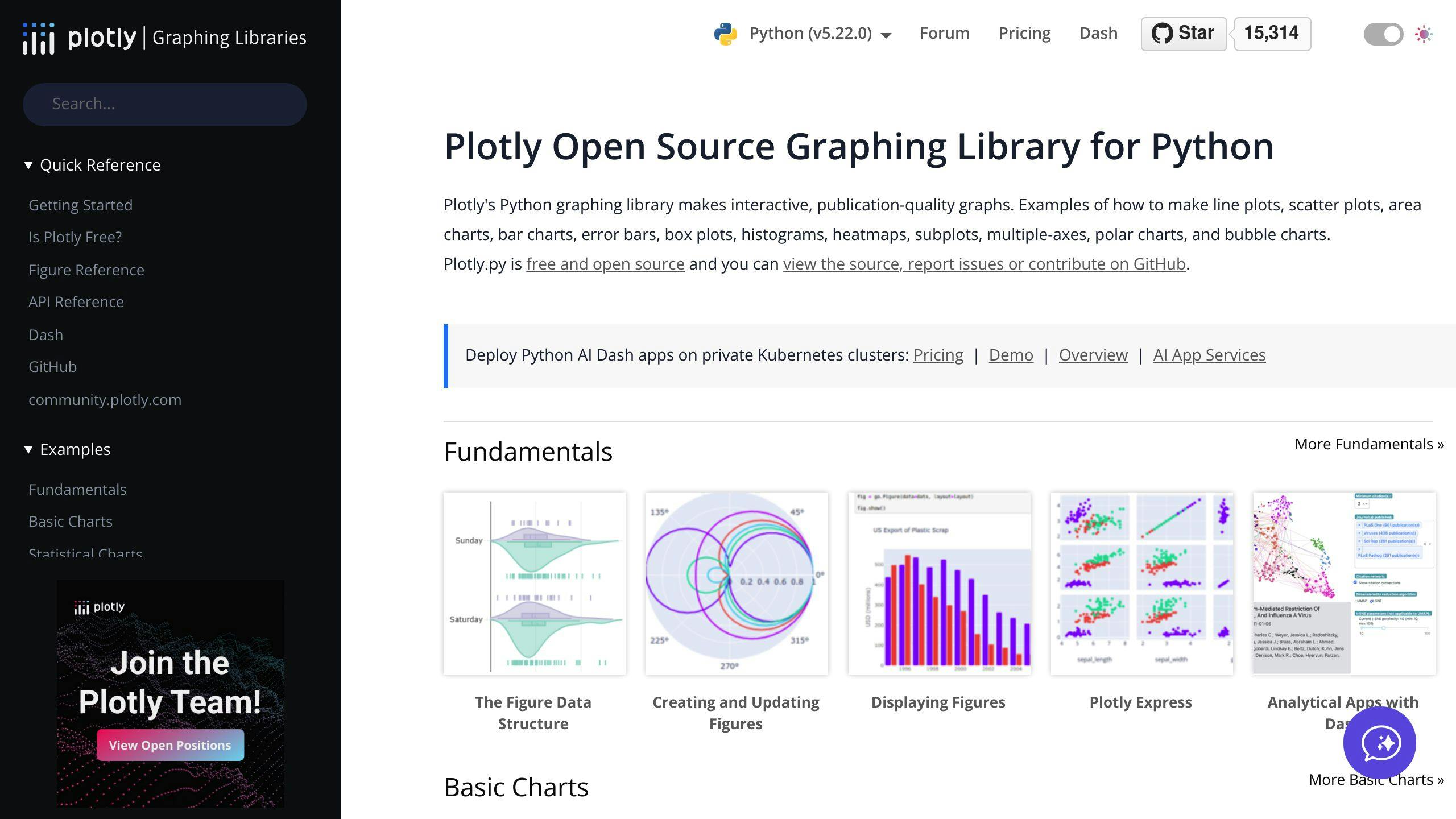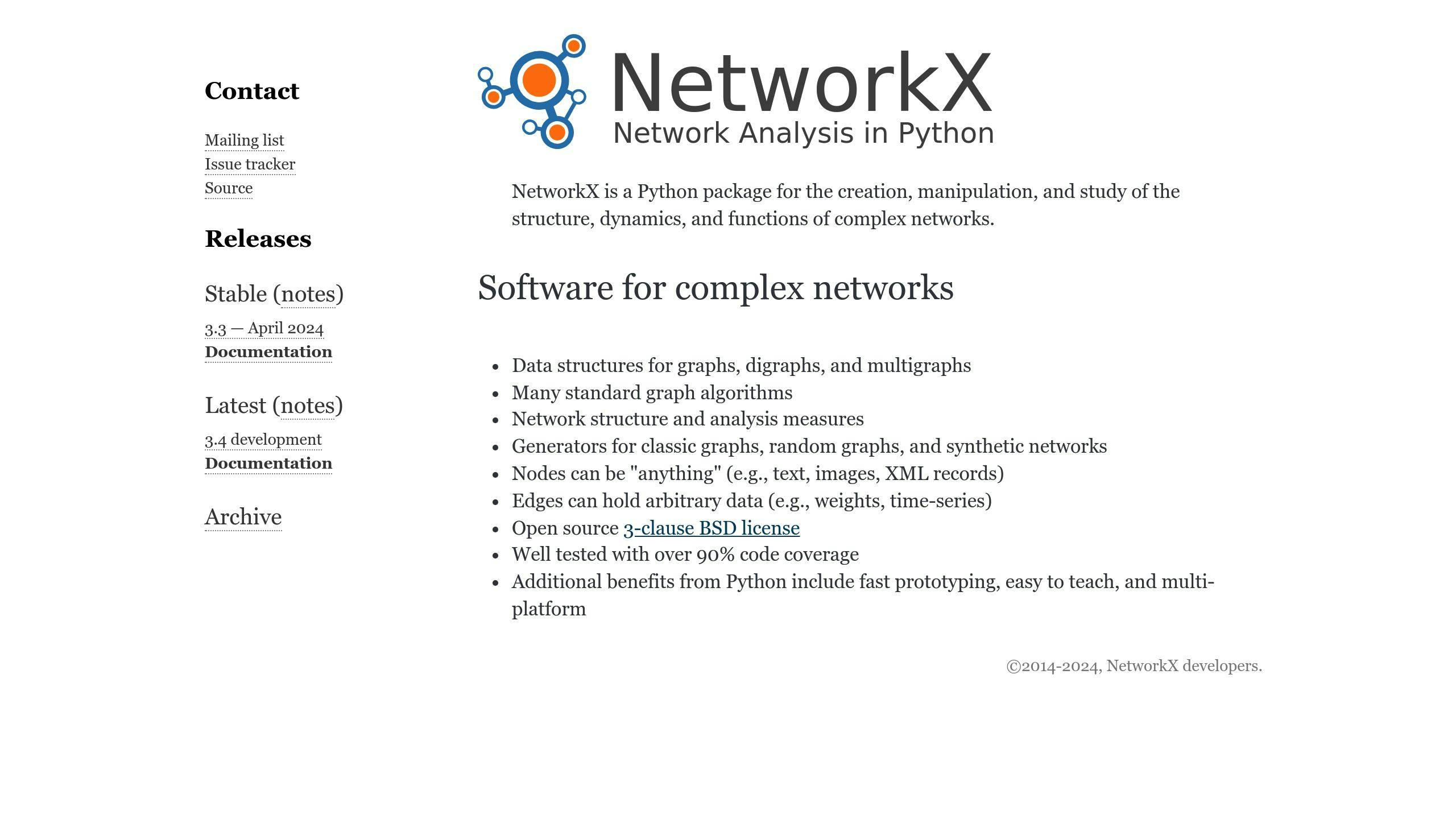Customer journey mapping helps retailers understand their customers' experiences and identify areas for improvement. A Python tool can analyze customer data, visualize journeys, and provide insights to enhance marketing strategies and operational efficiency.
Key Benefits:
- Improved Customer Experience: Identify pain points and opportunities to streamline the customer journey, reducing churn and increasing loyalty.
- Data-Driven Marketing: Develop targeted campaigns based on customer behavior, preferences, and motivations.
- Increased Operational Efficiency: Optimize processes and supply chains by pinpointing inefficiencies and areas for cost reduction.
Core Components:
- Data Collection: Gather customer data from various sources like surveys, transactions, website analytics, and feedback.
- Data Preparation: Clean, transform, and merge data using Python libraries like Pandas and NumPy.
- Data Modeling: Structure customer interactions, touchpoints, and behavior patterns into a data model.
- Visualization: Create Sankey diagrams and network graphs to visualize customer journeys and identify patterns.
- Analysis: Use algorithms like PageRank and community detection to gain deeper insights into customer pathways and clusters.
Deployment Strategies:
| Strategy | Description |
|---|---|
| Scalability | Deploy on cloud infrastructure to handle increasing data and traffic. |
| User Adoption | Provide comprehensive training and support for retail teams. |
| Maintenance | Schedule regular updates, backups, and security checks. |
| On-Premise vs. Cloud | Consider data security, compliance, and scalability requirements. |
By leveraging Python's data analysis and visualization capabilities, retailers can create a powerful customer journey mapping tool to drive business growth and customer satisfaction.
Requirements for Building a Python Mapping Tool

To create a Python tool for customer journey mapping in retail, you'll need to possess certain technical skills, knowledge, and tools. Here's a breakdown of the requirements:
Technical Skills
You should have:
- Python programming skills: A solid understanding of Python programming concepts, including data structures, object-oriented programming, and file input/output operations.
- Data analysis and visualization skills: Familiarity with popular Python libraries for data analysis and visualization, such as Pandas, NumPy, Matplotlib, and Seaborn.
- Data manipulation and cleaning skills: Knowledge of how to work with datasets, perform data cleaning, and handle missing values.
Knowledge
You should have:
- Customer journey mapping concepts: Understanding of the principles of customer journey mapping, including customer personas, touchpoints, and pain points.
- Retail industry knowledge: Familiarity with the retail industry, including customer behavior, sales funnel, and marketing strategies.
Tools
You'll need:
| Tool | Description |
|---|---|
| Python IDE | A Python Integrated Development Environment (IDE) like PyCharm, Visual Studio Code, or Spyder to write and execute your Python code. |
| Data visualization tools | Depending on your visualization needs, you may require additional tools like Tableau, Power BI, or D3.js. |
| Data storage | A database management system like MySQL, PostgreSQL, or MongoDB to store and manage your customer data. |
By possessing these technical skills, knowledge, and tools, you'll be well-equipped to create a Python tool for customer journey mapping in retail that meets your business needs.
Collecting and Preparing Customer Data
To create a customer journey map, you need to gather and prepare customer data. This section will guide you through the process of collecting relevant data from various sources and preparing it for analysis using Python libraries like Pandas and NumPy.
Data Sources
You can collect customer data from the following sources:
| Data Source | Description |
|---|---|
| Customer surveys | Online or offline surveys that provide insights into customer behavior, preferences, and pain points. |
| Transaction data | Sales data, including purchase history, order value, and frequency. |
| Website analytics | Data from tools like Google Analytics, including website traffic, bounce rates, and conversion rates. |
| Social media | Social media interactions, such as likes, shares, and comments. |
| Customer feedback | Feedback from various channels, including email, phone, and in-store interactions. |
Data Preparation
Once you've collected the data, you need to prepare it for analysis. This involves:
- Data cleaning: Handling missing values, outliers, and duplicates.
- Data transformation: Converting data types, aggregating data, and creating new variables.
- Data merging: Combining data from different sources into a single dataset.
Python Libraries for Data Preparation
You can use the following Python libraries for data preparation:
| Library | Description |
|---|---|
| Pandas | A powerful library for data manipulation and analysis. |
| NumPy | A library for numerical computing and data analysis. |
| SciPy | A library for scientific computing and data analysis. |
By using these libraries, you can efficiently prepare your customer data for analysis and create a comprehensive customer journey map.
Next, we'll explore how to create a data model for customer journeys using Python.
Creating a Data Model for Customer Journeys
Creating a data model for customer journeys is a crucial step in building a Python tool for customer journey mapping in retail. This model provides a structured framework for organizing and analyzing customer data, allowing you to identify patterns, trends, and insights that inform your customer journey map.
Selecting the Right Data Model
When selecting a data model, consider the following factors:
- Customer interactions: Identify the various touchpoints where customers interact with your brand.
- Customer behavior: Analyze customer behavior, including purchase history and browsing patterns.
- Customer feedback: Collect customer feedback from various sources.
Structuring Your Data Model
A well-structured data model should include the following components:
| Component | Description |
|---|---|
| Customer entity | Represents individual customers, including demographic information and behavior patterns. |
| Interaction entity | Captures customer interactions, such as website visits and purchases. |
| Touchpoint entity | Identifies specific touchpoints, such as social media platforms and in-store promotions. |
Visualizing Customer Journeys
Once you have a structured data model, you can use visualization tools to create a customer journey map. Sankey diagrams and network graphs are effective visualization techniques for illustrating customer journeys.
| Visualization Technique | Description |
|---|---|
| Sankey diagrams | Display the flow of customers through different touchpoints, highlighting areas of high engagement and drop-off points. |
| Network graphs | Show the relationships between different touchpoints, revealing patterns and clusters of customer behavior. |
By creating a data model and visualizing customer journeys, you can gain a deeper understanding of your customers' needs, preferences, and pain points, ultimately informing data-driven decisions to improve the customer experience.
In the next section, we'll explore how to visualize customer journeys using Python libraries like Matplotlib and Seaborn.
Visualizing Customer Journeys with Python
Visualizing customer journeys is a crucial step in understanding customer behavior and identifying areas for improvement. In this section, we'll explore how to create informative visualizations using Python libraries like Plotly, Matplotlib, and NetworkX.
Creating a Sankey Diagram with Plotly

Sankey diagrams are an effective way to visualize customer journeys, highlighting the flow of customers through different touchpoints and identifying areas of high engagement and drop-off points. To create a Sankey diagram using Plotly, follow these steps:
1. Import necessary libraries: import plotly.graph_objects as go 2. Define nodes and links: nodes = [...]; links = [...] 3. Create the Sankey diagram: fig = go.Figure(data=[go.Sankey(node = nodes, link = links)]) 4. Customize the diagram: fig.update_layout(title_text="Customer Journey Sankey Diagram")
Creating a Network Graph with NetworkX

Network graphs are another useful visualization technique for illustrating customer journeys. To create a network graph using NetworkX, follow these steps:
1. Import necessary libraries: import networkx as nx; import matplotlib.pyplot as plt 2. Define nodes and edges: G = nx.DiGraph(); G.add_nodes_from([...]); G.add_edges_from([...]) 3. Visualize the graph: pos = nx.spring_layout(G); nx.draw(G, pos, with_labels=True); plt.show()
By using these visualization techniques, you can gain a deeper understanding of your customers' needs, preferences, and pain points, ultimately informing data-driven decisions to improve the customer experience.
In the next section, we'll explore how to analyze customer interactions and pathways using Python.
Analyzing Customer Interactions and Pathways
Analyzing customer interactions and pathways helps you understand customer behavior and identify areas for improvement. By using NetworkX algorithms, you can gain deeper insights into customer journeys and optimize the customer experience.
Calculating PageRank
PageRank measures the importance of each node (touchpoint) in the customer journey. This helps you identify areas of high engagement and drop-off points. To calculate PageRank using NetworkX, follow these steps:
1. Import necessary libraries: import networkx as nx 2. Create a directed graph: G = nx.DiGraph() 3. Add nodes and edges: G.add_nodes_from([...]); G.add_edges_from([...]) 4. Calculate PageRank: pr = nx.pagerank(G)
Here's a sample output:
| Node | PageRank |
|---|---|
| Home page | 0.3 |
| Product page | 0.2 |
| Checkout page | 0.1 |
Community Detection
Community detection helps identify clusters of customers with similar behavior. This enables you to tailor your marketing strategies and improve customer engagement. To perform community detection using NetworkX, follow these steps:
1. Import necessary libraries: import networkx as nx; import community 2. Create a directed graph: G = nx.DiGraph() 3. Add nodes and edges: G.add_nodes_from([...]); G.add_edges_from([...]) 4. Perform community detection: partition = community.best_partition(G)
Here's a sample output:
| Community | Nodes |
|---|---|
| Community 1 | Home page, Product page |
| Community 2 | Checkout page, Payment page |
By applying these NetworkX algorithms, you can gain a deeper understanding of customer interactions and pathways, ultimately informing data-driven decisions to improve the customer experience.
sbb-itb-ceaa4ed
Improving and Testing Your Mapping Tool
To ensure your Python tool for customer journey mapping in retail is accurate, efficient, and effective, it's essential to focus on improving and testing it. This section will cover best practices for refining your tool, optimizing code efficiency, enhancing visualization impact, and ensuring data accuracy.
Optimizing Code Efficiency
Optimize your code to improve the performance of your mapping tool. Here are some tips:
| Tip | Description |
|---|---|
| Use efficient data structures | Leverage Python's built-in data structures, such as dictionaries and lists, to store and manipulate customer journey data. |
| Minimize loops | Reduce the number of loops in your code by using vectorized operations or list comprehensions. |
| Leverage caching | Implement caching mechanisms to store intermediate results and avoid redundant calculations. |
Enhancing Visualization Impact
Effective visualization is critical to communicate insights from customer journey data. To enhance visualization impact, follow these guidelines:
| Guideline | Description |
|---|---|
| Choose the right visualization | Select visualization types that best represent the data, such as heatmaps for customer interaction patterns or Sankey diagrams for pathway analysis. |
| Customize visualization settings | Adjust visualization settings, such as colors, fonts, and layouts, to improve readability and aesthetics. |
| Use interactive visualizations | Leverage interactive visualization libraries, like Plotly or Bokeh, to enable users to explore data in more detail. |
Ensuring Data Accuracy
Data accuracy is paramount to ensure reliable insights from customer journey data. To ensure data accuracy, follow these best practices:
| Best Practice | Description |
|---|---|
| Validate data sources | Verify the accuracy and completeness of customer journey data from various sources, such as website analytics or CRM systems. |
| Handle missing values | Implement robust methods to handle missing values, such as imputation or interpolation, to avoid data loss or bias. |
| Monitor data quality | Regularly monitor data quality and perform data cleaning and preprocessing to maintain data integrity. |
By following these guidelines, you can refine your Python tool for customer journey mapping in retail, ensuring it provides accurate, actionable insights to inform data-driven decisions.
Deploying the Customer Journey Mapping Tool
When deploying the customer journey mapping tool in a retail environment, consider the following strategies to ensure a successful deployment:
Scalability
To handle increasing amounts of data and user traffic, consider deploying your tool on a cloud-based infrastructure. This will ensure that your tool remains responsive and efficient.
User Adoption
To ensure user adoption, provide adequate training and support to your retail team. Develop a comprehensive training program that covers the tool's features and best practices.
Maintenance
Regular maintenance is critical to ensure the tool remains stable, secure, and up-to-date. Schedule regular updates, backups, and security checks to prevent data breaches and system downtime.
On-Premise vs. Cloud Deployment
When deciding between on-premise and cloud deployment, consider the following factors:
| Deployment Option | Pros | Cons |
|---|---|---|
| On-Premise | Greater control over data security and compliance | Significant upfront investments in hardware and infrastructure |
| Cloud | Greater scalability and flexibility | Security and compliance risks |
By considering these strategies, you can ensure a successful deployment of your customer journey mapping tool and provide your retail team with a powerful tool to drive business growth and customer satisfaction.
Using Mapping Insights for Retail Strategy
By analyzing customer journey maps, retailers can make informed decisions, enhance customer experience, and guide marketing strategies. Here are some practical ways to use mapping insights for retail strategy:
Identifying Pain Points and Opportunities
Customer journey mapping helps identify areas of friction in the customer experience. Retailers can prioritize improvements to streamline the customer journey, reducing churn and increasing loyalty.
| Pain Point | Solution |
|---|---|
| Difficult checkout process | Optimize payment gateway or introduce alternative payment methods |
| Long wait times | Implement a queue management system or increase staff during peak hours |
Informing Marketing Strategies
Customer journey mapping provides insights into customer behavior, preferences, and motivations. Retailers can use these insights to develop targeted marketing campaigns.
| Insight | Marketing Strategy |
|---|---|
| Customers engage with social media promotions | Allocate more resources to social media marketing |
| Customers prefer personalized offers | Develop targeted loyalty programs |
Enhancing Customer Experience
By understanding the customer's perspective, retailers can design experiences that meet their needs and expectations.
| Insight | Solution |
|---|---|
| Customers want personalized product recommendations | Implement a recommendation engine |
| Customers value seamless returns | Develop a hassle-free return policy |
Improving Operational Efficiency
Customer journey mapping can help retailers identify operational inefficiencies and areas for cost reduction.
| Inefficiency | Solution |
|---|---|
| High return rates due to incorrect sizing | Optimize inventory management and supply chain processes |
| Long shipping times | Implement a faster shipping option or optimize logistics |
By applying these insights, retailers can create a customer-centric approach that drives business growth, increases customer satisfaction, and sets them apart from competitors.
Conclusion
Creating a Python tool for customer journey mapping in retail can help businesses gain valuable insights into their customers' behaviors and preferences. By using Python, retailers can analyze customer data, identify pain points, and develop targeted marketing strategies to improve customer experience and drive business growth.
Key Takeaways
| Benefit | Description |
|---|---|
| Improved customer experience | Analyze customer data to identify areas for improvement |
| Data-driven marketing | Develop targeted marketing strategies based on customer insights |
| Increased efficiency | Optimize operational processes to reduce costs and improve customer satisfaction |
By prioritizing customer-centricity and continuous improvement, retailers can create a loyal customer base that drives long-term success. Python is a powerful tool for customer journey mapping, offering a range of benefits and opportunities for retailers to stay competitive in a rapidly changing market.
Remember, the key to successful customer journey mapping is to understand your customers' needs and preferences. By putting the customer at the heart of your retail strategy, you can create a loyal customer base that drives business growth.
In conclusion, Python is a valuable tool for customer journey mapping in retail, offering a range of benefits and opportunities for retailers to improve customer experience, drive business growth, and stay competitive.
Additional Learning Resources
To further improve your skills in creating a Python tool for customer journey mapping in retail, we recommend exploring the following resources:
Books
| Book Title | Author | Description |
|---|---|---|
| Python for Data Analysis | Wes McKinney | Learn how to use Python for data analysis, essential for customer journey mapping. |
| Customer Journey Mapping: A Practical Guide | Get a comprehensive overview of customer journey mapping, including its benefits and best practices. |
Online Resources
| Resource | Description |
|---|---|
| Python Data Science Handbook | Learn about Python data science, including data cleaning, visualization, and machine learning, applicable to customer journey mapping. |
These resources will help you expand your knowledge and skills in Python and customer journey mapping, enabling you to create a more effective and insightful tool for your retail business.


